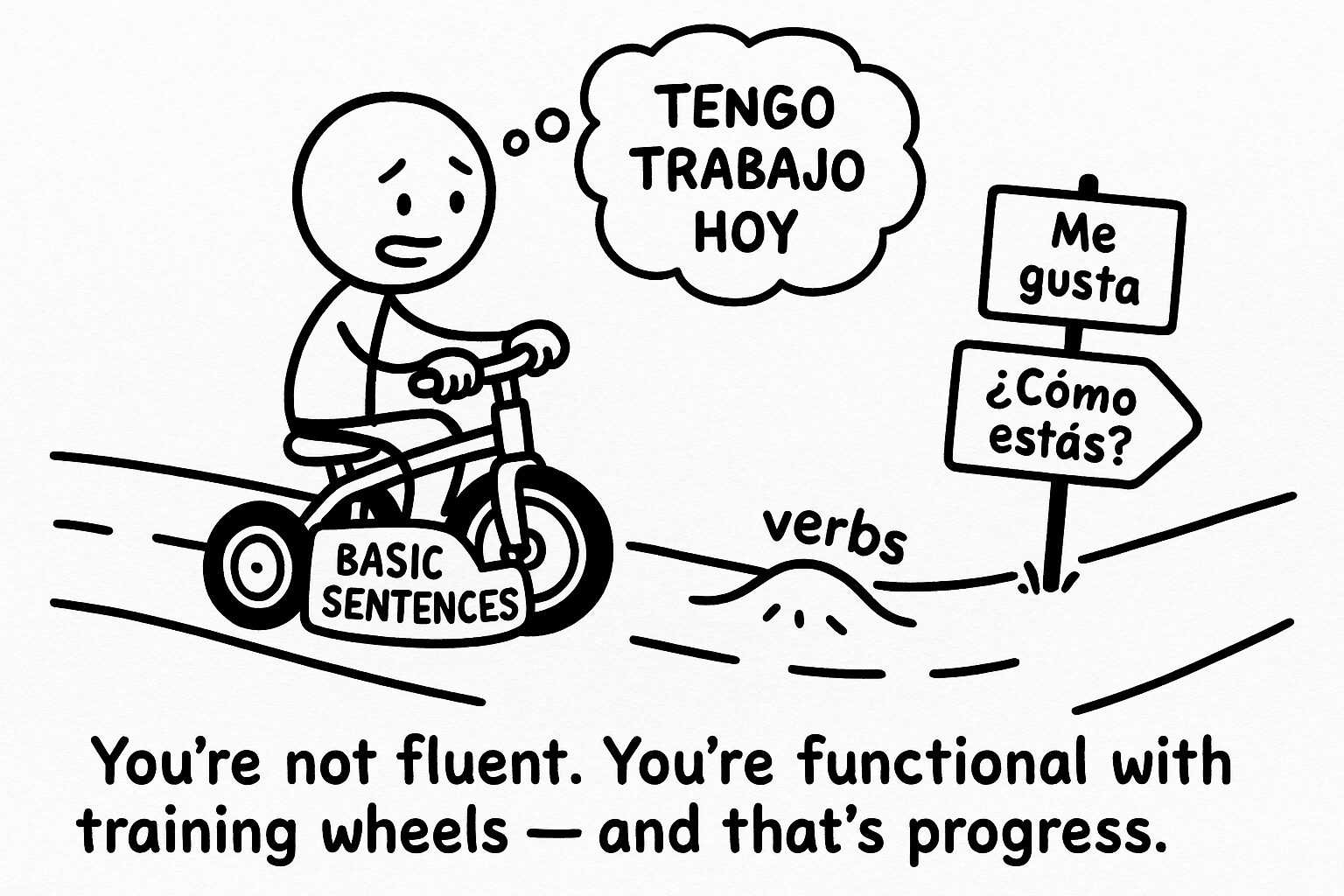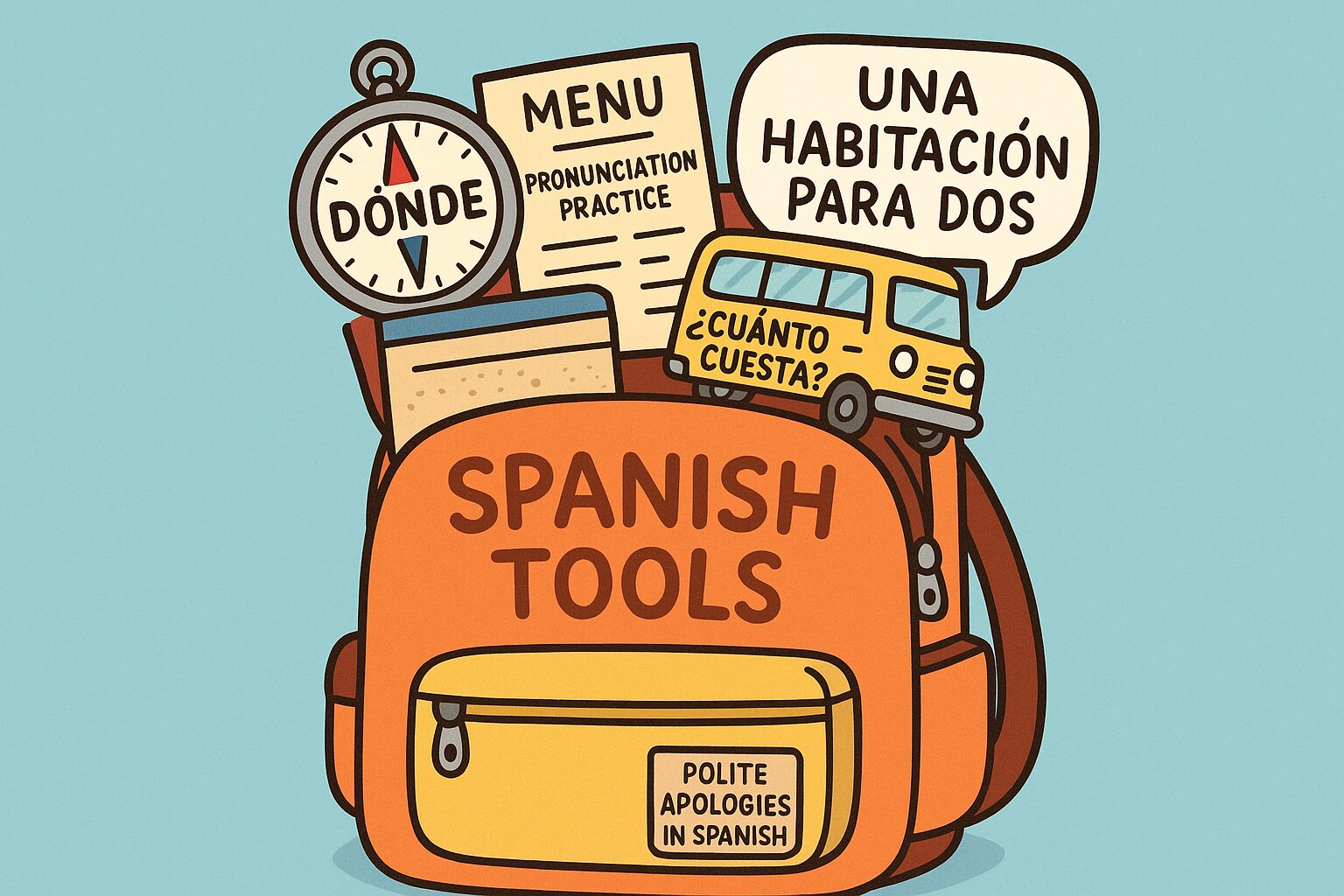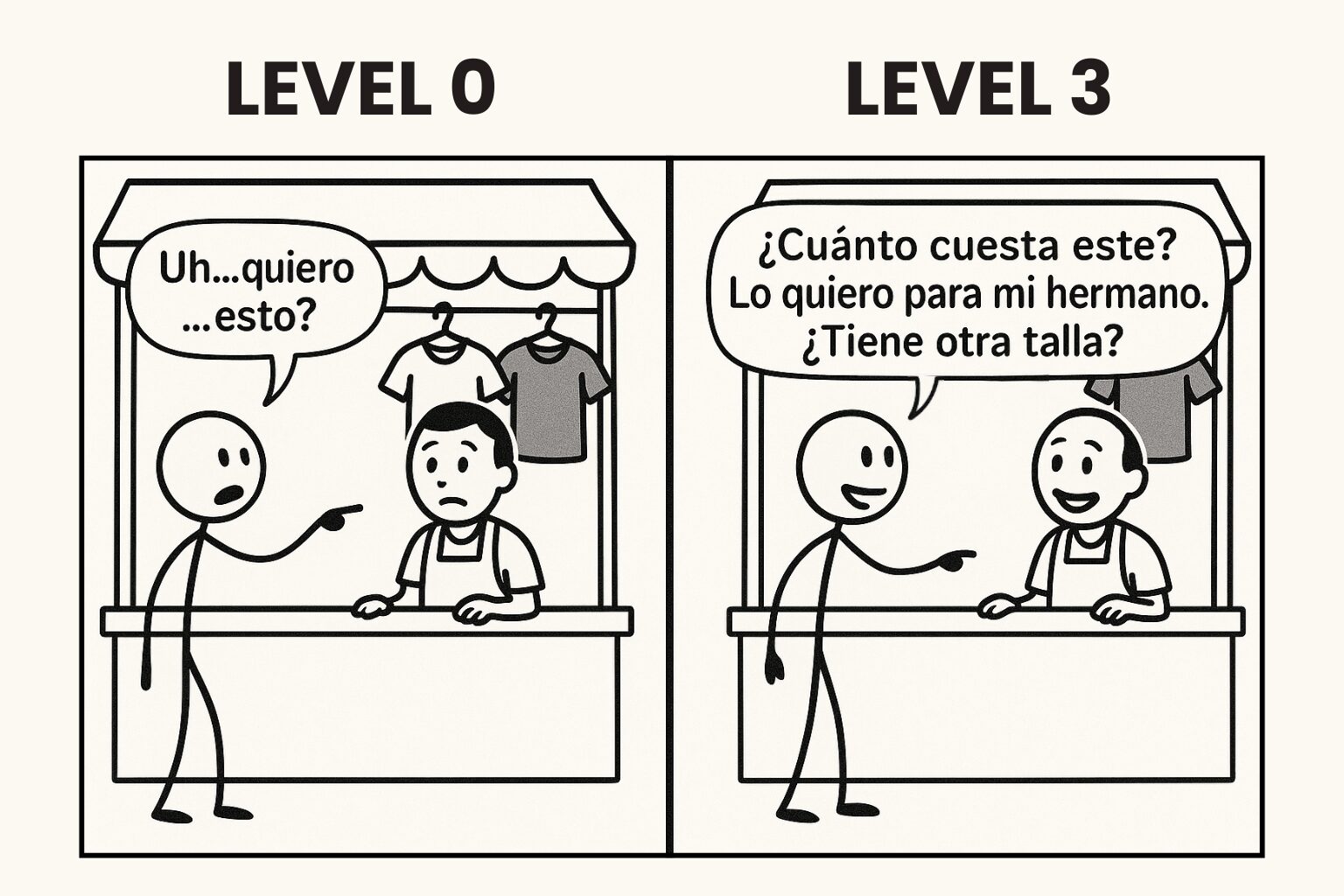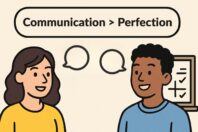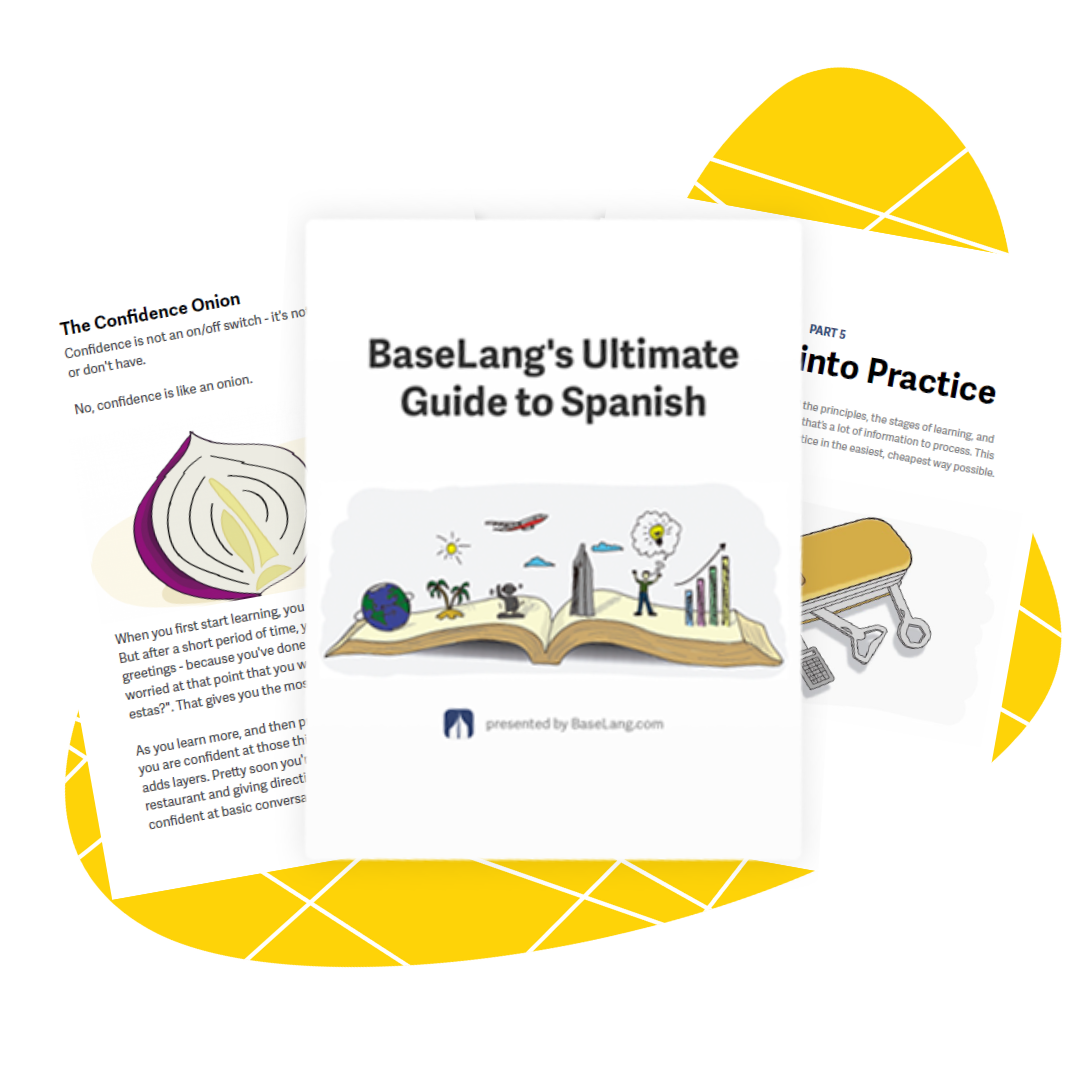How to Learn Spanish as a Beginner: The Complete Guide That Actually Works
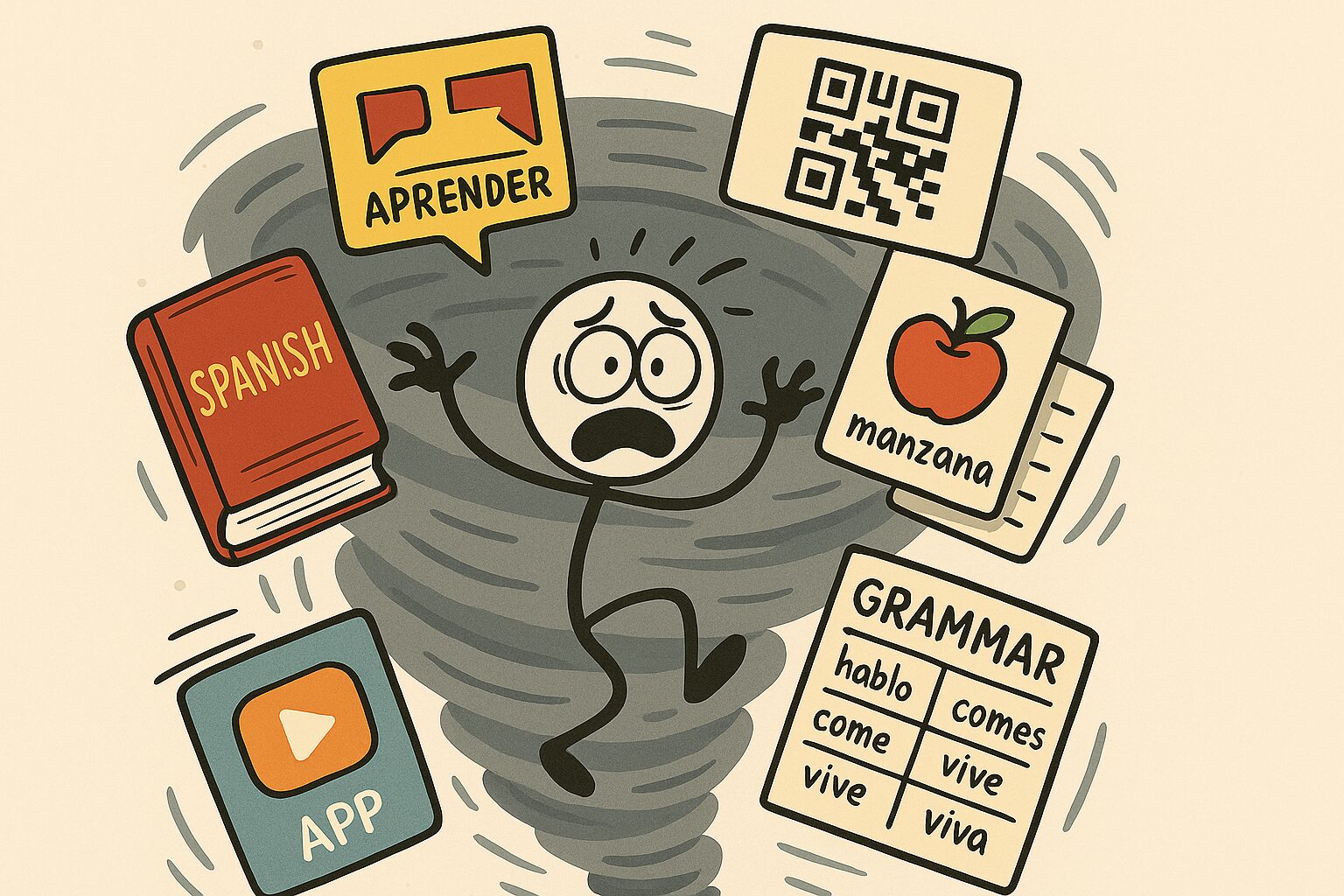
Get our free email course, Shortcut to Conversational.
Have conversations faster, understand people when they speak fast, and other tested tips to learn faster.
More infoIf you’re constantly wondering ‘how can I learn Spanish as a beginner?’ then keep reading this post, because it doesn’t need to take years.
Despite what most language apps and courses tell you, there’s a straightforward way to go from zero Spanish to having real conversations, without drowning in grammar charts or getting stuck in “study mode” forever.
The problem is that most advice on how to learn Spanish for beginners focuses on everything except what actually matters: speaking.
As a result, most people spend months learning verb conjugations, but when it comes to speaking, they freeze up.
This guide breaks down the proven system that’s helped over 20,000 students go from complete beginners to confident Spanish speakers. No fluff, no false promises, just what actually works based on real student data.
Why Most Beginners Fail to Learn Spanish (And How to Avoid It)
The biggest mistake beginners make isn’t lack of motivation – it’s information overload. Most people try to juggle multiple apps, grammar books, and YouTube channels all at once. They spend months “preparing” to speak Spanish instead of actually speaking it.
Here’s the truth: you can study grammar and vocabulary for years, but if you never have actual conversations, you’ll never become conversational. Period.
The students who make fast progress follow a simple two-part system:
- Learn the essential basics (high-frequency vocabulary and core grammar)
- Use those basics in real conversations immediately
Most resources focus entirely on part one and ignore part two. That’s why you meet people who’ve “studied Spanish for years” but can’t order food at a restaurant.
The Foundation: What Every Spanish Beginner Needs to Learn First
When you’re learning Spanish as a beginner, what you study matters more than how long you study. Focus on these essentials first:
High-Frequency Vocabulary: The most common 600-1,000 Spanish words give you 85% comprehension in typical conversations. Skip the random vocabulary lists and focus on words you’ll actually use.
Core Grammar Patterns: Master present tense, basic past tense, and “going to” future (skip the formal future tense for now). You need just enough grammar to express your thoughts, not pass a linguistics exam.
Survival Phrases: Essential greetings, numbers, days of the week, and emergency phrases let you function immediately in real situations.
Pronunciation Basics: Getting Spanish sounds right from the beginning prevents bad habits and helps you understand others when they speak.
The Proven Method: How to Learn Spanish as a Beginner Step-by-Step
Step 1: Start Speaking From Day One
This is non-negotiable. Begin with simple phrases and short dialogues immediately. Don’t wait until you “know enough grammar” – that day never comes. Even if you can only say “Me llamo [your name]” and “¿Cómo estás?”, start there.
Step 2: Focus on High-Impact Learning
If you’re already familiar with the 80/20 Rule (also called the Pareto Principle), you know it’s the idea that 80% of the results come from 20% of the effort. Language learning works the same way.
Roughly 20% of the language, the most common vocabulary and a handful of high-frequency grammar patterns, will get you through 80% of real-world conversations. That means you can follow along, respond, and participate long before you’ve “learned everything.”
Our Real World curriculum is specifically optimized around this principle. Instead of teaching you every possible verb tense, we start with the patterns you’ll use most of the time. Instead of random vocabulary lists, you learn the words that show up in most Spanish conversations.
And if you want to focus on that “20%” that makes the biggest difference, start with our list of the most common Spanish words and the most common Spanish verbs. These will cover the bulk of what you’ll hear in everyday conversations.
Step 3: Master the Sounds Early
Spanish pronunciation is actually straightforward once you understand the basic sounds. Getting this right early prevents comprehension problems later, especially when people speak fast.
For a clear overview of all the key Spanish sounds, see our free pronunciation course: Sounds of Spanish. Getting these right from the start will make listening and speaking much easier later on.
Step 4: Use Spaced Repetition for Vocabulary
Flashcards work, but only if you use them correctly. Apps like Anki or Brainscape help you memorize vocabulary efficiently. But remember: flashcards get words into your head, conversations make them stick.
Step 5: Embrace Imperfection
You’ll make mistakes. You’ll say embarrassing things. You’ll forget words mid-sentence. This isn’t failure, it’s required.
Here’s our philosophy: communication beats perfection every time. It’s better to have a slightly imperfect conversation than to say nothing at all. Perfect Spanish comes from speaking lots of imperfect Spanish, not from avoiding mistakes until you’re “ready.”
Native speakers will understand you even with grammar mistakes. They won’t understand you if you never speak.
Your Spanish Learning Progression as a Beginner
It’s always easier to break down the journey of learning Spanish into clear, manageable stages.
In this section, we can use the BaseLang curriculum as a good framework to visualize how your skills can grow over time. This structured approach is ten levels (0–9), grouped into three main stages: Beginner (0–3), Intermediate (4–6), and Advanced (7–9).
Each level builds on the one before it, so you always know exactly what to focus on next.
Beginner (Levels 0–3) – Build Your Foundation and Talk About Your Life
- Level 0 – Survival Spanish
You’ll learn essential sounds, basic greetings, and emergency phrases like “no entiendo” (I don’t understand). Master vocabulary for ordering food, asking for directions, and handling basic needs. By the end, you can navigate essential situations and make yourself understood in restaurants, hotels, and shops. - Level 1 – Introduce Yourself and Ask Questions
You’ll build the foundation to talk about who you are, what you do, and where you’re from. Learn to ask and answer basic questions about others, describe people and objects around you. You can have your first real conversations about yourself, your family, and your interests. - Level 2 – Make Plans and Express Your Preferences
You’ll handle everyday situations like shopping, making appointments, and coordinating schedules. Learn to tell time, express what you like and dislike, and make future plans. - Level 3 – Tell Stories About Your Past
You’ll share experiences and memories from your life. Learn to describe your daily routines, talk about past events, and navigate transportation and entertainment. You can tell friends about your weekend, describe your childhood, and handle travel situations with confidence.
Intermediate (Levels 4–6) – Express Complex Ideas and Opinions
- Level 4 – Give Detailed Opinions and Make Comparisons
You’ll move beyond basic facts to share nuanced thoughts. Learn to compare different options, give detailed opinions, and make suggestions. You can participate in discussions about movies, restaurants, or travel destinations and influence decisions in group settings. - Level 5 – Discuss Hypotheticals and Past Habits
You’ll explore “what if” scenarios and talk about how things used to be. Learn to discuss hypothetical situations, describe past habits, and express nuanced preferences. You can talk about career changes, reminisce about childhood, and engage in deeper philosophical conversations. - Level 6 – Have Extended Conversations Without Running Out of Steam
You’ll develop the skills for longer discussions on complex topics. Learn to discuss work challenges, travel experiences, and cultural differences in detail. You can maintain hour-long conversations about subjects you care about without constantly searching for words.
Advanced (Levels 7–9) – Sound Natural and Handle Any Situation
- Level 7 – Speak Confidently About Future Plans and Abstract IdeasYou’ll discuss your goals, predictions, and theoretical concepts with ease. Learn to express future plans, make predictions, and connect ideas smoothly. You can participate in business meetings, discuss career aspirations, and debate abstract concepts like politics or philosophy.
- Level 8 – Handle Debates, Negotiations, and Complex Discussions
You’ll navigate challenging conversations that require precision and tact. Learn to express complex conditional ideas, handle disagreements diplomatically, and use sophisticated expressions. You can negotiate contracts, mediate conflicts, and participate in academic or professional debates. - Level 9 – Conversationally Fluent
You’ll adjust your speaking style to match any social situation. Learn to switch between formal and casual language, understand cultural nuances, and use subtle expressions that natives use. You can handle everything from casual conversations with friends to formal presentations.
And now that you know what each stage covers, the next question is obvious: how long will it take to get there?
How Long Does It Take to Learn Spanish as a Beginner?
From the Beginner stage (Levels 0–3) to Advanced (Levels 7–9), the full Real World program takes about 215 hours of structured practice (guided lessons with real conversation, not passive app time.)
We get a lot of questions about how long it takes to reach fluency in Spanish. The calculator below gives you our best estimate, based on data from our students and our teaching experience, along with your starting level and how much time you plan to study each day. Just adjust the sliders to see your personalized timeline.
-
Conversational
We define conversational as being able to effectively have complete conversations in social settings, when talking about typical topics and your interests. It’s not always easy, but most things you don’t have too much difficulty with. While advanced students will also benefit from BaseLang, beginners who want to become conversational will see the fastest progress, by far. We estimate roughly 120 hours for someone with no experience to get to this level using our methods.*
-
Highly Fluent
We define fluency as being able to effectively have complete conversations with similar comfort and ease as one’s native language in social settings, when talking about a wider range of typical topics and your interests. Different students will need a higher or lower level depending on their interests and what they have conversations about, and thus this is a blurry, approximate level. We estimate roughly 350 hours for someone with no experience to get to this level using our methods.*
What’s your current level?
How much time will you spend per day?
Cost Breakdown
-
$179
-
Online tutor $15/hour$450 $321 savings /mo
-
In-person tutor $50/hour$1,500 $1,371 savings /mo
-
$596
-
Online tutor $15/hour$1,575 $1,059 total savings
-
In-person tutor $50/hour$5,250 $4,734 total savings
*This is an estimation based on our experience teaching Spanish and not a guarantee (read our guarantee here). Results may vary for many reasons. While we believe our methods to be the most efficient and cost effective available, BaseLang is a tool and results depend directly on the effort and time spent by the student.
Common Mistakes That Keep Spanish Beginners Stuck
Grammar Obsession: Studying verb charts before you can form basic sentences. Grammar should serve communication, not replace it. Learn just enough to say what you need, then add more as you progress.
App Hopping: Switching between multiple platforms instead of sticking with one system. Pick a method that emphasizes speaking and commit to it for at least 90 days.
Perfectionism: Waiting to speak until your Spanish is “good enough.” Your Spanish will never feel ready. Start speaking with what you have, not what you wish you had.
Passive Learning: Thinking you can learn Spanish by watching movies or listening to music. While these help, they can’t replace active practice and conversation.
Your Next Steps to Learn Spanish as a Beginner
Ready to start? Here’s your action plan:
- Choose a conversation-focused method that gets you speaking from day one
- Set a realistic daily schedule and stick to it consistently
- Start speaking immediately, even if it’s just reading dialogues out loud
- Find conversation partners or tutors for regular practice
- Track your progress with specific, measurable goals
The most important step is the first one. Spanish fluency isn’t about talent or perfect study methods, it’s about consistent practice with the right approach.
Ready to Start Speaking Spanish?
Learning Spanish as a beginner follows a predictable pattern when you focus on what actually works: conversation from day one, high-frequency vocabulary, and consistent practice.
The system outlined here has helped thousands of students go from zero Spanish to confident conversations. It’s not always easy, but it’s straightforward.
Ready to have your first Spanish conversation? The best time to start was yesterday. The second-best time is right now. Check out our programs here.

